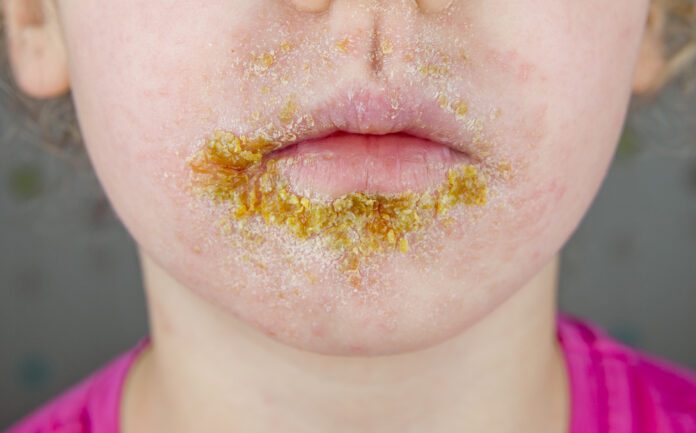Overview Of Streptococcus – Impetigo
Streptococcus – Impetigo is a common skin infection.
Commonly Associated With
Strep – impetigo; Staph – impetigo; Staphylococcus – impetigo
Causes Of Streptococcus – Impetigo
Impetigo is caused by streptococcus (strep) or staphylococcus (staph) bacteria. Methicillin-resistant staph aureus (MRSA) is becoming a common cause.
Skin normally has many types of bacteria on it. When there is a break in the skin, bacteria can enter the body and grow there. This causes inflammation and infection. Breaks in the skin may occur from injury or trauma to the skin or from insect, animal, or human bites.
Impetigo may also occur on skin where there is no visible break.
Impetigo is most common in children who live in unhealthy conditions.
In adults, it may occur following another skin problem. It may also develop after a cold or other viruses.
Impetigo can spread to others. You can catch the infection from someone who has it if the fluid that oozes from their skin blisters touches an open area on your skin.
Symptoms Of Streptococcus – Impetigo
Symptoms of impetigo are:
- One or many blisters are filled with pus and easy to pop. In infants, the skin is reddish or raw-looking where a blister has broken.
- Blisters that itch, are filled with yellow or honey-colored fluid, and ooze and crust over. The rash may begin as a single spot but spreads to other areas due to scratching.
- Skin sores on the face, lips, arms, or legs that spread to other areas.
- Swollen lymph nodes near the infection.
- Patches of impetigo on the body (in children).
Exams & Tests
Your health care provider will look at your skin to determine if you have streptococcus – impetigo.
Your provider may take a sample of bacteria from your skin to grow in the lab. This can help determine if MRSA is the cause. Specific antibiotics are needed to treat this type of bacteria.
Treatment Of Streptococcus – Impetigo
The goal of treatment is to get rid of the infection and relieve your symptoms.
Your provider will prescribe an antibacterial cream. You may need to take antibiotics by mouth if the infection is severe.
Gently wash (DO NOT scrub) your skin several times a day. Use an antibacterial soap to remove crusts and drainage.



